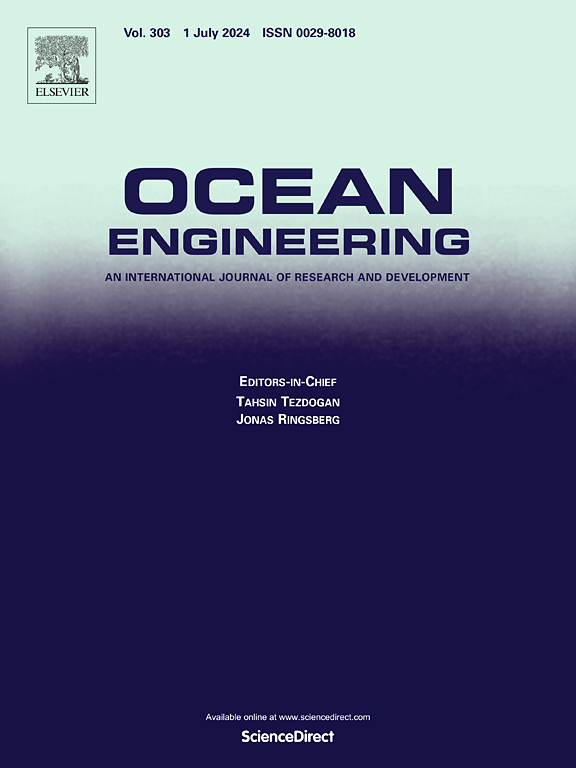具有土壤-结构相互作用和各种桩型的海上风力涡轮机疲劳分析
IF 4.6
2区 工程技术
Q1 ENGINEERING, CIVIL
引用次数: 0
摘要
单桩式海上风力涡轮机(OWT)很容易出现疲劳损坏,而时域疲劳分析耗时且不适合模拟各种加载条件。本研究对具有土壤-结构相互作用(SSI)和不同单桩设计(传统单桩、带延伸单桩、带轮单桩和四扰流肋单桩)的 OWT 进行了频域疲劳分析。首先,建立了详细的 OWT 三维有限元模型。塔架、单桩和土壤采用实体元件建模,SSI 采用莫尔-库仑失效准则和表面-表面接触进行计算。接着,推导出塔架和单桩上风力和波浪载荷的功率谱密度。随后,评估了单个和组合风浪载荷下 OWT 的疲劳损伤。结果表明,损坏随波浪高度的增加而增加,在额定风速和波浪频率接近 OWT 的第一频率时达到峰值。风引起的破坏明显大于波浪引起的破坏,风浪联合荷载产生的破坏大于单个荷载的总和。此外,其他单桩设计,特别是带有轮子的单桩,可以减少疲劳损坏,但需要仔细考虑轮子和肋骨的应力集中效应。本文章由计算机程序翻译,如有差异,请以英文原文为准。
Fatigue analysis of offshore wind turbines with soil-structure interaction and various pile types
Monopile offshore wind turbines (OWTs) are susceptible to fatigue damage, and time domain fatigue analysis is time-consuming and unsuitable for simulating various loading conditions. In this study, frequency domain fatigue analysis of OWTs with soil-structure interaction (SSI) and different monopile designs (the conventional monopile, monopiles with an extension, a wheel, and four spoiler ribs) is conducted. First, detailed 3D finite element models of OWTs are developed. The tower, monopile, and soil are modelled using solid elements, and SSI is accounted for using the Mohr-Coulomb failure criterion and surface-to-surface contact. Next, the power spectral densities of wind and wave loads on the tower and monopile are derived. Subsequently, the fatigue damages of the OWTs are evaluated under individual and combined wind and wave loads. The results show that damage increases with wave height, peaking at the rated wind speed and wave frequency close to the first frequency of the OWTs. Wind-induced damage is significantly greater than wave-induced damage, and the combined wind and wave loads produce more damage than the sum of the individual loads. Additionally, alternative monopile designs, particularly the monopile with a wheel, can reduce fatigue damage, though stress concentration effects on the wheel and ribs require careful consideration.
求助全文
通过发布文献求助,成功后即可免费获取论文全文。
去求助
来源期刊

Ocean Engineering
工程技术-工程:大洋
CiteScore
7.30
自引率
34.00%
发文量
2379
审稿时长
8.1 months
期刊介绍:
Ocean Engineering provides a medium for the publication of original research and development work in the field of ocean engineering. Ocean Engineering seeks papers in the following topics.
 求助内容:
求助内容: 应助结果提醒方式:
应助结果提醒方式:


